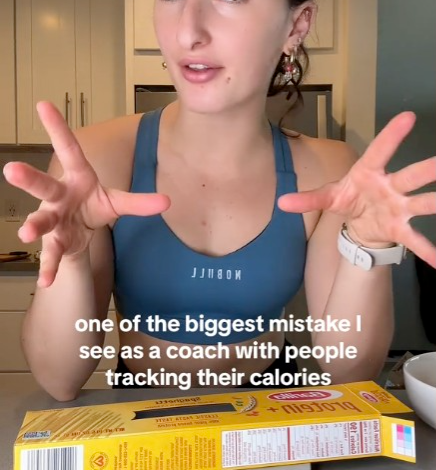Biggest mistake you can make when tracking calories revealed

End of an error?
Most Americans have used a calorie-tracking app — or good, old-fashioned pen and paper — to log their dietary decisions and physical activity to see if they are burning more calories than they are consuming.
It can be frustrating to see the scale stuck on the same old number despite this effort. One reason for this inertia may be that you’re not properly weighing what you eat.
“One of the biggest mistakes I see as a coach with people tracking their calories — if a serving is 2 ounces dry or uncooked, you [should] weigh it dry or uncooked,” Olivia Van Guyse, a physical therapist based in California, explained on TikTok.
Van Guyse showed her 218,600 TikTok followers what 2 ounces of dry spaghetti looks like.
She cooked the pasta, put it in a bowl and weighed it again. It turned out to be 6.1 ounces, not including the weight of the bowl.
“Same rules apply for rice, vegetables and meat,” Van Guyse said. “So either weigh/measure beforehand or make sure you type into your app ‘cooked pasta,’ ‘cooked ground beef.’ Just know it might not be as accurate.”
On TikTok, registered dietitian Danielle McClellan notes that rice typically triples in weight when cooked.
She recommends her clients weigh their food after cooking it.
“It is so much easier to meal prep on Sunday and make a bunch of chicken, rice, pasta and then just weigh it out during the week based on your serving size,” McClellan said. “The key thing with this is that in your food-tracking app, you select the ‘cooked’ food.”
She demonstrated her point by preparing 45 grams of dry brown rice, which ballooned to 143 grams when cooked. She plugged the results into her food tracker.
She said 143 grams of cooked brown rice has 34 grams of net carbs, which is total carbs minus dietary fiber.

Meanwhile, 143 grams of uncooked brown rice has 104 grams of net carbs.
“So make sure you’re entering ‘cooked’ or ‘uncooked’ for all of the foods in your food-tracking app,” McClellan advised.




